What Is Keratoconjunctivitis Sicca (KCS) in Dogs?
A condition known as keratoconjunctivitis sicca (KCS) causes dogs to experience dry eyes. It is more often referred to as dry eye in dogs. However, the specific medical term relates to the inflammation of the cornea and the surrounding conjunctiva tissues that begin to dry out.
This common condition is brought on by the lack of aqueous production by the lacrimal gland or the third eyelid gland. Dry eye in dogs is often overlooked, even though the diagnosis of the condition is relatively straightforward.
Tears play an essential role in maintaining the surface of the eyes because they provide for the avascular cornea’s metabolic requirements. Tears contain globulins and other antimicrobial materials that ensure foreign bodies (such as dirt) are washed away. Another function of tears is to lubricate ocular surfaces and help with the optical refraction process.
The tear film (which coats the cornea and keeps the eyes feeling moist and comfortable) is made of up of three layers. The lipid layer is the outermost layer, and the mucin layer is the innermost layer. However, most of the physiological functions involves the aqueous layer, which is the largest layer and is located between the lipid and mucin layers.
In canines, the largest percentage of production of the aqueous layer occurs in the lacrimal gland, with the remainder produced by the third eyelid. Once the ocular surfaces have been washed with tears, they will flow through the puncta where they will reach the nasolacrimal system before draining into either the oral or nasal cavity.
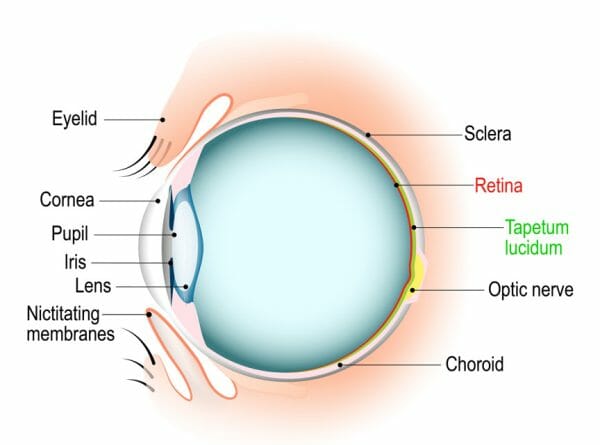
What Causes Dry Eye in Dogs?
A reduction in tear production can be caused by the following:
- Immune mediated diseases, which can damage the glands that produce tears
- Hypothyroidism, which decreases a dog’s metabolism and affects every part of the body
- Systemic diseases (such as canine distemper)
- General anesthetic, which can significantly reduce tear production for up to 24 hours after being administered
- Topical/Systemic Atropine, which is a drug used to treat eyes but also has a potential side effect of decreasing tear production
- Medetomidine, Xylazine, and Butorphanol, which are sedatives that can temporarily reduce tear production
KCS generally affects middle-aged or senior dogs. Usually, both eyes will be affected. However, it is not uncommon for one eye to appear worse than the other.
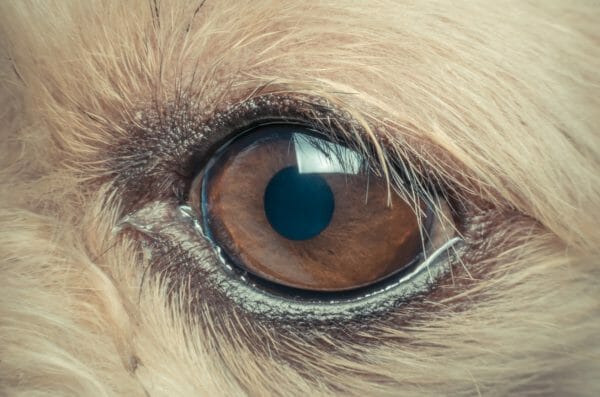
Keratoconjunctivitis Sicca Dog Symptoms
To identify dry eye condition in dogs, look for the following signs:
- Red, irritated eyes that look painful
- Squinting and excessive blinking
- Holding the eyes shut
These symptoms will usually be coupled with a thick, yellow mucus discharge that comes from the aqueous portion of the tear film. Where the condition is recurrent or chronic, ulcers and conjunctivitis will also be common.
Dogs often develop scarring to the cornea. This is known as hyperpigmentation and will only be visible on close inspection. Usually, this scarring will look like a dark film that covers the dog’s eyes. Where scarring is extensive, vision will be impaired. Due to the lack of fluid, the dog’s eyes may appear dull and lusterless.
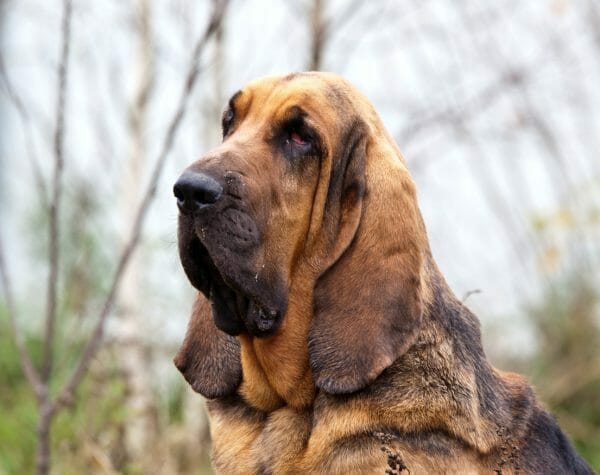
What Breeds Are More Prone to Keratoconjunctivitis Sicca?
Dog breeds prone to developing KCS (Dry Eye) include:
- Bloodhounds
- Boston Terriers
- Cavalier King Charles Spaniels
- Cocker Spaniels
- English Bulldogs
- Lhasa Apsos
- Miniature Schnauzers
- Pekingese
- Pugs
- Samoyeds
- Shih Tzus
- Springer Spaniels
- West Highland White Terriers
- Yorkshire Terriers
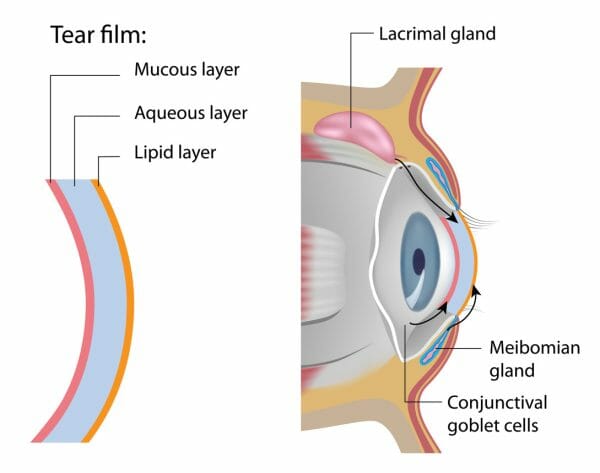
Diagnosing KCS
If any of the symptoms are present in a dog, a veterinarian should be consulted for a full assessment. Diagnosis will be made based on the dog’s medical history, as well as an observation of the clinical signs through tests such as the Schirmer Tear Test, the Tear Film Break Up Time Test, and the Phenol Red Thread Tear Test.
- Schirmer Tear Test: uses wicking paper to see how much tear film is produced over the course of one minute
- Tear Film Break Up Time Test: looks at how long it takes for the precorneal tear film to show dry patches when a drop of fluorescein is applied to an eye that is held open; the test usually takes between 15 to 20 seconds
- Phenol Red Thread Tear Test: uses a 75 mm thread that is impregnated with a pH indicator called phenol red. This is placed in the lower conjunctival fornix of the dog’s eye. When held in position for 15 seconds, the alkaline in the tears will change the color of the thread from yellow to orange.
Additional testing may also be performed, including:
- Cornea staining, which helps identify the presence of any corneal ulcers
- Intraocular pressure test, which rules out the presence of glaucoma
- Examination of the tear ducts to ensure the tears are allowed to drain properly
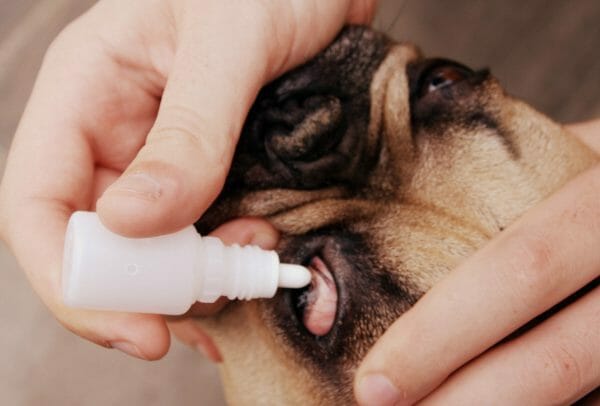
Keratoconjunctivitis Sicca Dog Treatment
When a dog has dry eyes, any treatment provided will serve two purposes:
- Stimulate the production of tears
- Replace the missing tear film and, in doing so, protect the cornea
To stimulate tear production, the following eye drops for dogs with dry eye may be used:
- Tacrolimus ophthalmic (should only be used in dogs that do not have a viral condition)
- Cyclosporine for dogs’ dry eye
These drops will be applied to the dog’s eyes once or twice a day. The medication is safe, and the prognosis is good provided the drops are used consistently. In cases of neurogenic KCS, pilocarpine may also be useful.
Treatment to promote the replacement of tear film is generally used alongside a tear production stimulant. This will ensure that the cornea remains moist, particularly at the start of the treatment.
Tear replacement should be administered every two to six hours depending on how severe a case of KCS is. In some cases, a dog may require an anti-inflammatory medication or a topical antibiotic to help treat any underlying inflammation and infection.
Alongside any keratoconjunctivitis sicca treatment for dogs, it is important that the dog’s eyes are thoroughly cleaned several times each day. This should be done gently using a warm damp washcloth. This will help reduce the symptoms and can stimulate the production of the tear film.
A veterinarian will be able to demonstrate the correct technique for cleaning the dog’s eye and administering eye drops.



